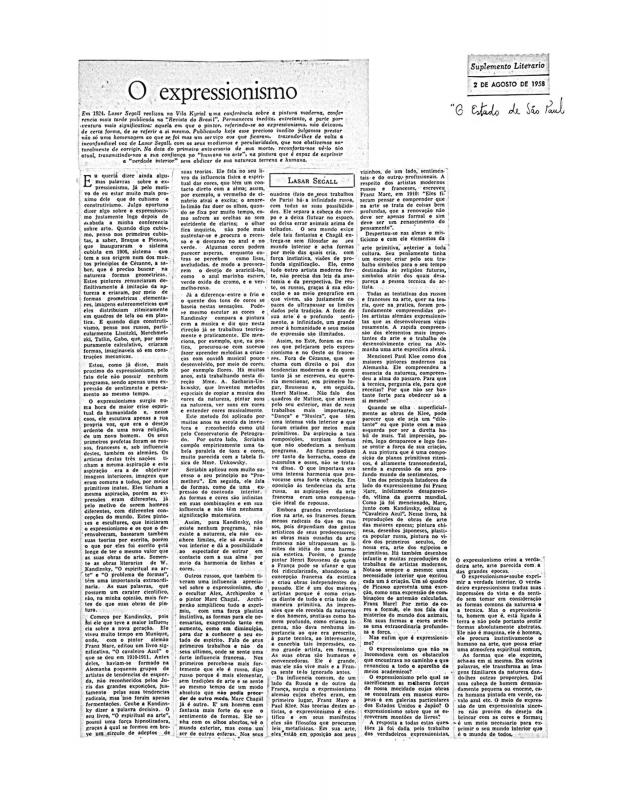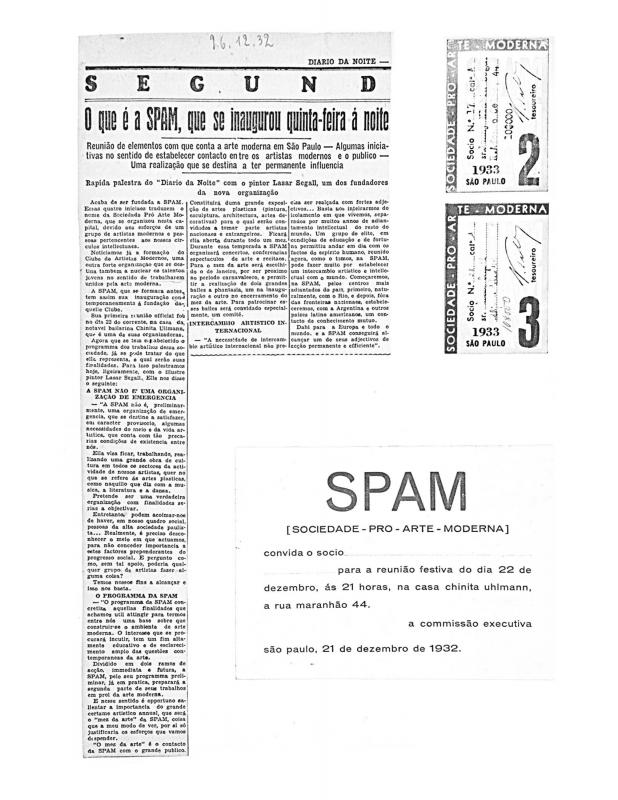This is one of the three articles about Lasar Segall’s paintings published by the writer Murilo Mendes in the Rio de Janeiro newspaper A Manhã in 1951. Mendes highlights the painter’s consuming interest in the diaspora experience and mentions works that focus on war, pogroms (persecution of the Jews), and the suffering endured by immigrants in Brazil. Mendes notes the religious overtones of Segall’s work by acknowledging his Semitic origins, which according to the writer, are what give his work its somber tone.
Lasar Segall (1891–1957) was born in Vilnius, Lithuania, where his family was part of the Jewish community. He enrolled in the School of Applied Arts in Berlin, and in the early years of the century, spent time at the Academy of Fine Arts. In 1912 he traveled to Brazil, where his siblings were already living. The Centro de Ciências e Artes de Campinas (SP) bought one of his paintings, Cabeça de menina russa (1908). He returned to Europe during the First World War and with a group of German painters (such as Otto Dix) he cofounded the Dresdner Sezession–Gruppe 1919. After an exhibition of Russian art in Hanover in 1921, he became friends with Kandinsky. In 1923, he returned to Brazil. He painted a mural at the Pavilhão de Arte Moderna, a meeting place for artists and intellectuals at the home of the great promoter of the Semana de Arte Moderna of 1922, Mrs. Olivia Guedes Penteado.
A few months after Segall’s first visit to Brazil, Abílio Miller wrote about the artist’s exhibition in Campinas (São Paulo, 1913) in an article entitled “Um pintor de almas: a propósito de Lasar Segall” [see the ICAA digital archive (doc. no. 1084988)]. The magazine Revista Acadêmica published its tribute, “Número de homenagem a Lasar Segall” (eighty-two pages) in the mid-1940s (doc. no. 1110322). Of note is Mário de Andrade’s positive appraisal of Segall’s “Brazilian phase” (1924–28). Segall took part in the Primeira Exposição de Arte Moderno of the SPAMcollective in 1933, as well as in the SPAMolândia project in 1934. Three of his paintings and seven prints were featured in the Entartete Kunst Ausstellungsführer [Exhibition of Degenerate Art] organized by the Nazis in Munich in 1937 to discredit modern art. In the 1940s, Segall traveled, painted stage sets, and illustrated books and magazines. His major work, Navio de emigrantes (1939–41), was highly praised by George Grosz.
[As complementary reading, see the following articles by Lasar Segall: “Existe uma arte judaica?” (doc. no. 783319); “O expressionismo” (doc. no. 783352); Mangue (doc. no. 1110480); Poemas negros (doc. no. 1110581); “O que é a SPAM, que se inaugurou quinta-feira à noite” (doc. no. 783486); and “SPAM (Sociedade Pró-Arte Moderna)–Manifesto” (doc. no. 783455)].








